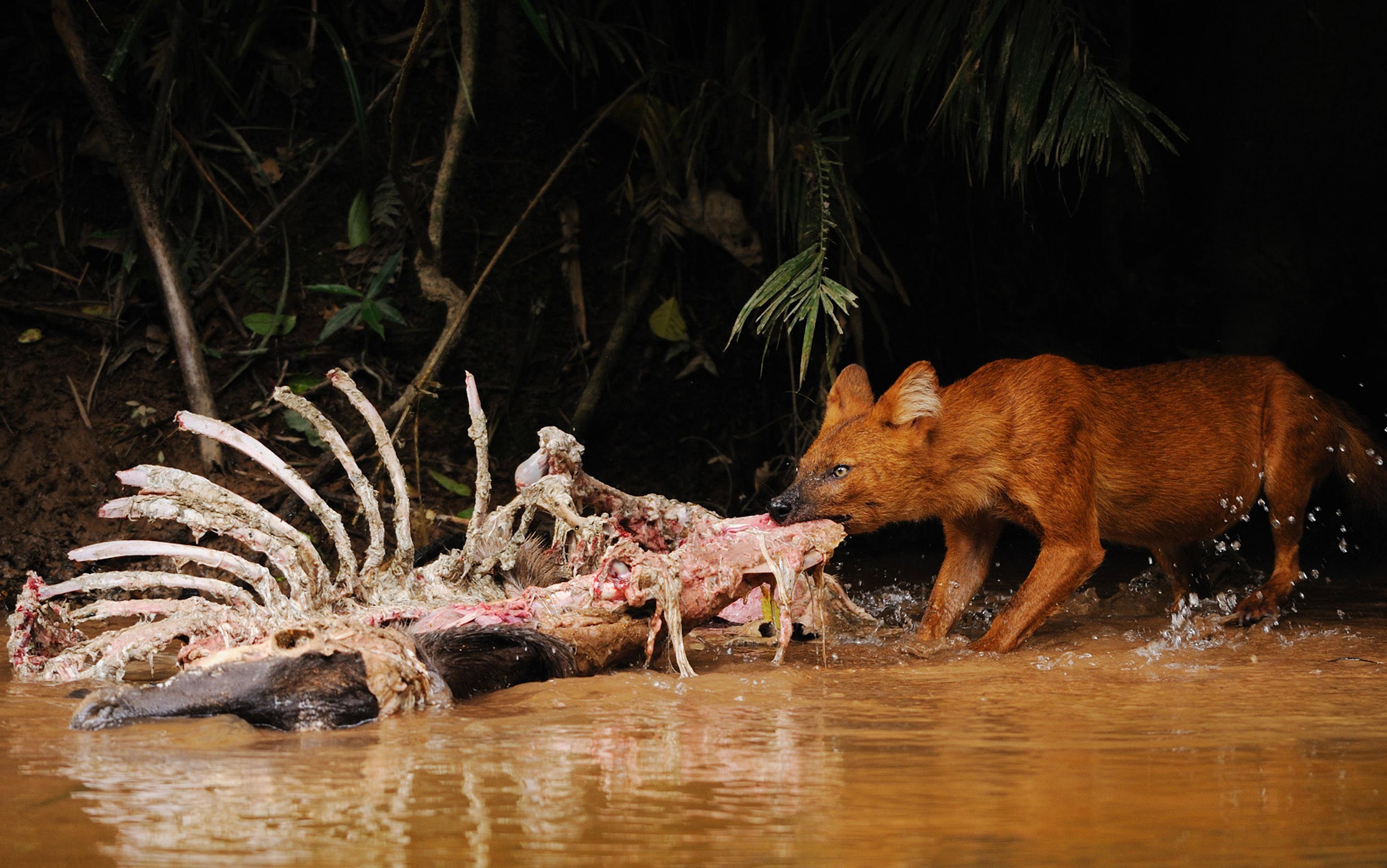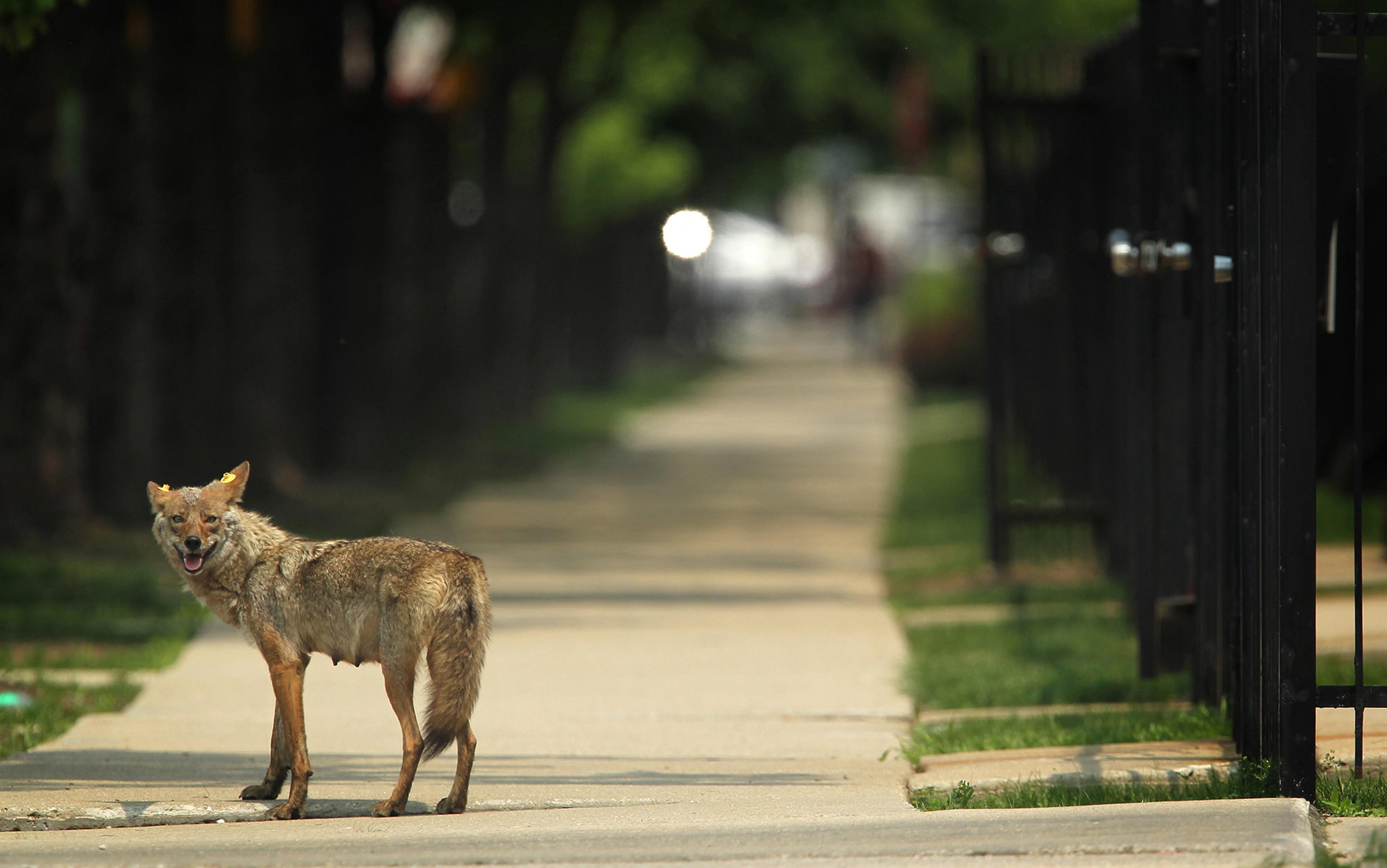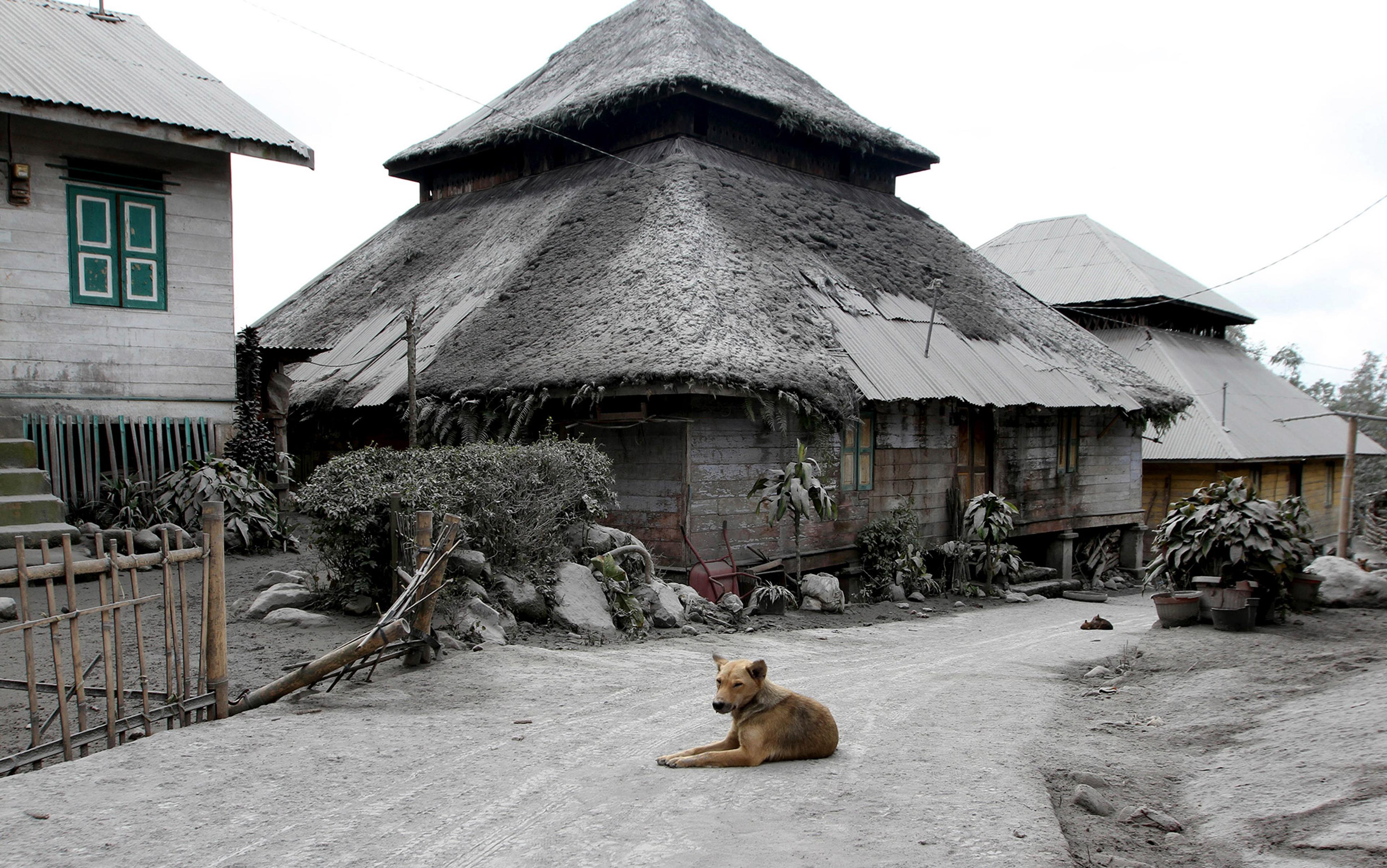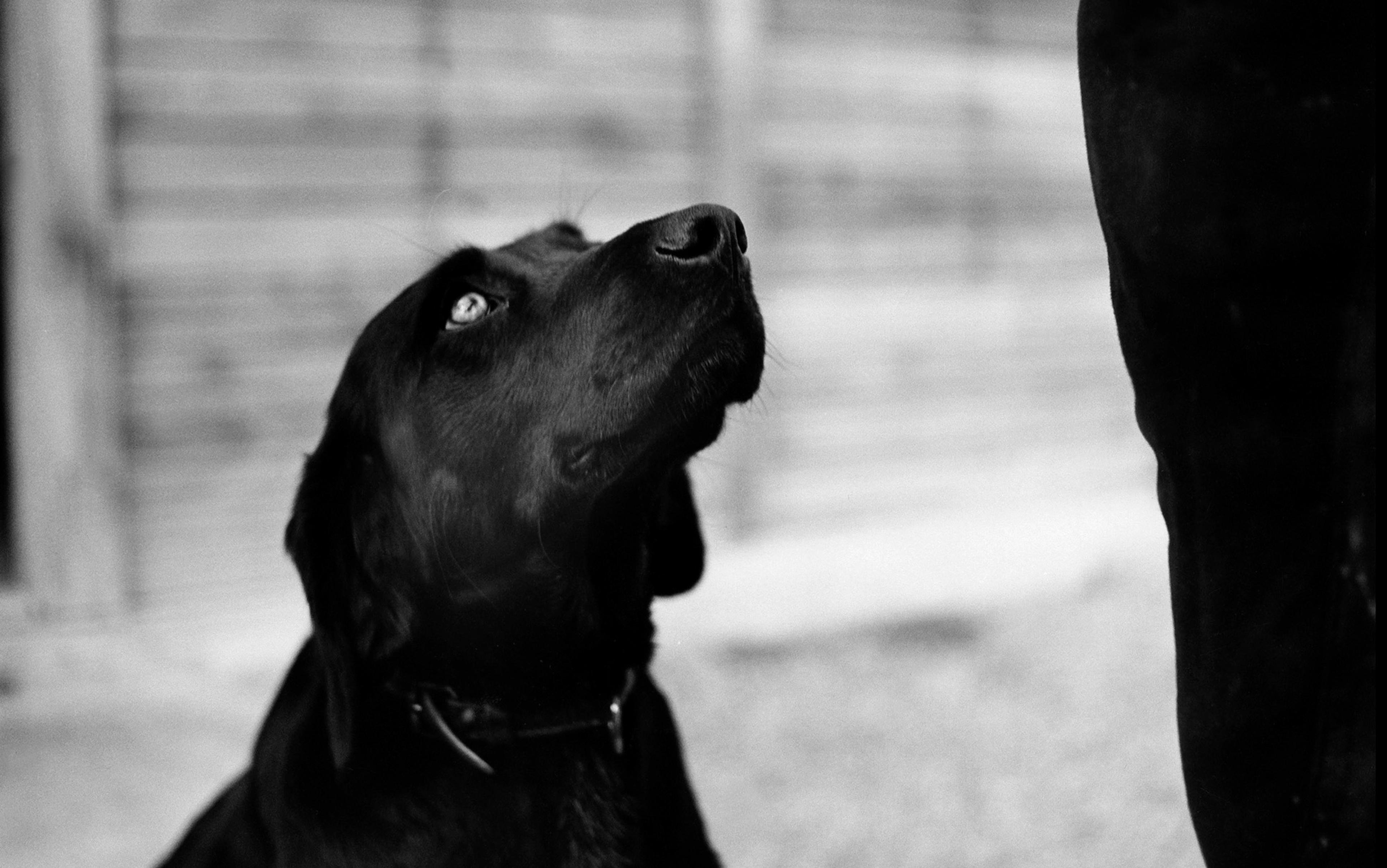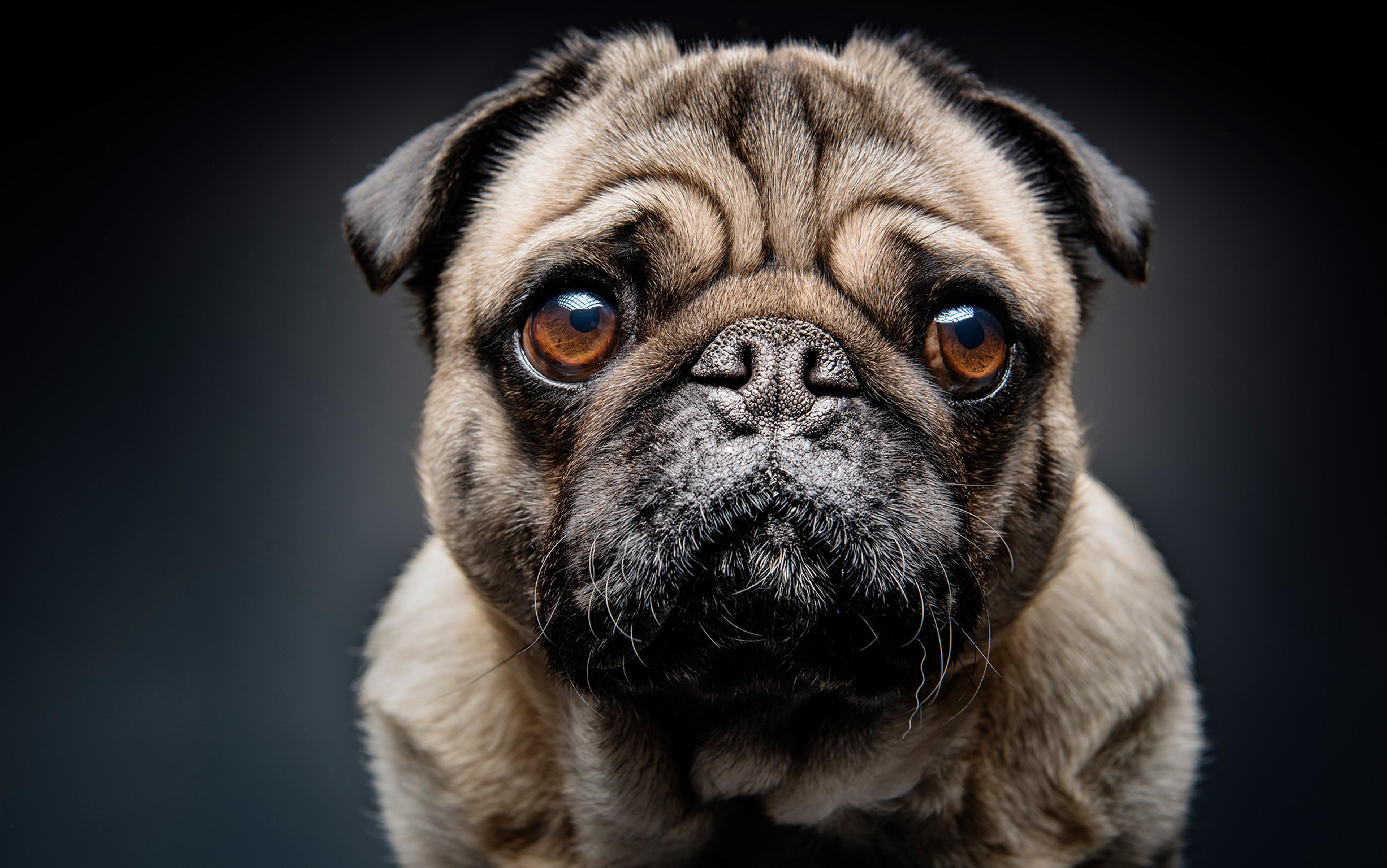It sounds like a jet – but it can’t be. I look up into the jungle canopy at Khao Yai National Park in Thailand and spot the wings that made the roar: they belong to a wreathed hornbill, a bird with a helmet-like beak half the size of its body, and whose feathers, in flight, can be heard for half a mile. In this park north of Bangkok, on the trunks of trees 10 storeys tall, I can see where wild elephants rubbed their itchy, wrinkled skin, and where moon bears carved inscriptions with their claws.
But I’ve come halfway around the world to this place full of wonders hoping to see… dogs. Red, wild, forest dogs that most people have either never heard of, or consider as pests. Tourists to the park have been known to throw stones at them to chase them off their prey.
‘And they are a critically endangered species!’ laments the conservation biologist Nucharin Songsasen. The interim head of the Smithsonian’s Center for Species Survival, she’s one of two principal investigators on the project I’ve joined, assisted by volunteers from the citizen-science nonprofit Earthwatch. Our team will search for kills and scat, mount camera traps, and try to capture and radio-collar these wild dogs in an attempt to penetrate their secret lives.
Asiatic wild dogs, also known as dholes, are among the rarest, most enigmatic and most endangered canids on Earth. Here at Khao Yai, even elephants are more common than they are. Yet, Songsasen reports, the former park director here suggested shooting them – ‘because he thought there were too many!’
Perhaps as few as 2,000 breeding dholes remain on the planet – fewer than the world’s breeding tigers. Yet they’re perceived as overabundant. They’re shot, poisoned and trapped. While tigers are celebrated as stars in conservation circles, dholes are so little-known that, at one gathering Songsasen attended, people pronounced the name of her study animals as ‘dee-holes’ (it is ‘doles’).
Wild dogs everywhere have a serious PR problem. One quarter of the world’s 25 species of wild dog are threatened or endangered. They are persecuted with a passion. In Africa, the dens of the critically endangered Cape Hunting Dogs have been set on fire, with young dogs inside. In Australia, farmers capture dingoes in cruel leghold traps, and hunt them for sport – in some areas, with state encouragement. In Bhutan, dholes were nearly wiped out by a government-sponsored poisoning campaign. (When, as a result, wild pig numbers exploded, decimating crops, officials relented, and dholes there are on the rebound.)
All sizeable wild carnivores, from bears to lions, can upset people when they kill domestic stock – which happens with increasing frequency as humans push into wild areas. But wild canids seem to elicit especially furious retaliation.
The animal behaviourist and zoologist Patricia McConnell, an advocate for grey wolf recovery in Wisconsin, was stunned by the spite directed at wolves. On hunters’ message boards, one writer, who trapped wolves with legholds, was asked how he killed them. His answer: ‘As slowly as possible.’
Another American wild dog, the coyote, might be hated even more – which has spelled disaster for the red wolf, thought to be a coyote cousin unique to the United States, and of which only a handful remain. Once widespread in the eastern US, the red wolf was so relentlessly persecuted by farmers and ranchers that by 1967 the species was declared endangered under a law that preceded the Endangered Species Act.
These wolves were the subject of America’s first efforts at reintroducing an endangered carnivore, Songsasen explained. But by the time the last of them were captured for captive breeding, red wolves were so few, they were interbreeding with coyotes to find mates. In 1987, the US Fish and Wildlife Service began releasing captive-bred red wolves into the coyote-free Alligator River National Wildlife Refuge in North Carolina. Their numbers grew to more than 100 living in five North Carolina counties. Then, coyotes moved south into the red wolf areas. Hunters shot the wolves, mistaking them for coyotes (especially likely as coyotes are often shot at night). The only way to protect the struggling endangered species was to outlaw shooting coyotes in those five counties. But hunters were so outraged by the ban on killing coyotes that they persuaded North Carolina’s Wildlife Resources Commission to ask the US Fish and Wildlife Service to halt the reintroduction programme and declare the red wolf extinct. The programme is now on hold.
‘I don’t understand why everyone hates coyotes so much,’ Songsasen said. The rancour seems particularly enigmatic since coyotes are so closely genetically related to our pet dogs that they – as well as all species of wolves and jackals – can even interbreed.
Why is it that, even in the US, where Americans spend millions of dollars a year on pet dogs, their endangered, wild relatives are the objects of such breathtaking hatred and violence?
Wild dogs might be hated not in spite of but because they are so similar to the pets we cherish. The characteristics most loathed in wild dogs, and those most valued in Canis familiaris, are virtually identical – but in ways we often fail to recognise.
As gibbons whoop their morning, alien duets around us, I stand with the rest of the dhole team at the edge of a little pond lined with reeds, bent over to examine the ribcage of a sambar doe.
Just a five-minute walk from our cabin, this, and a skull we find a few feet away, is all that remains of a 400-pound deer. She was killed by three dholes, Songsasen explains to our group. The dholes accomplished this feat by applying their typical hunting technique. Extreme athletes who can run 45 miles per hour and are excellent swimmers, they often drive their prey into water, swim after it, and kill it by eating it alive.
Songsasen has heard sambar shrieking in terror while under attack by a pack of dholes. ‘I was thinking, please, please, just kill it already,’ she tells us. ‘But they can’t help it. They have to do it this way, because they’re so much smaller than their prey.’
Typically weighing less than 40 pounds, dholes can’t kill their food by a single bite to the neck like a 400-pound tiger. Such is the case with all the large wild dogs. Smaller canids, such as foxes, specialise in catching rodents and other little animals. They typically don’t live in groups. But canids who hunt larger game can’t subdue their prey alone; they can kill it only with the help of others – usually in a way similar to the dholes.
Because they must get their food this way, dholes and their relatives – such as wolves, African Cape Hunting Dogs, and dingoes – depend on the social relationships in their tight-knit group to survive.
These pack-hunting species, and not the foxes, are the closest genetic relatives of Canis familiaris. And it’s this very same adaptation for hunting prey so much larger than themselves – prey that they then must consume alive – that makes the domestic dog man’s best friend.
‘What makes a dog a dog?’ McConnell asks rhetorically. To her, and to many others who study them, the answer is obvious: ‘The major part of a dog is being social,’ she points out. ‘What’s more important to them than that? They are hypersocial – and we, of course, treasure that social need and nature of dogs, and use it to our advantage.’
‘How threatening to have this dog-like creature that people don’t have power over!’
Many other animals, of course, are social. Horses herd. Birds flock. Wild pigs live in family groups called sounders. Humans have domesticated many of these species. But no animal has become more integral or intimate a companion to our kind than the dog – in large part, because our values, and our ways of life, are so much the same.
For wild dogs, hunting demands a degree and type of cooperation and communication similar to that employed by people. Nobody knows this better than Elizabeth Marshall Thomas, the author of The Hidden Life of Dogs (1994). ‘Cooperation is everything,’ she says. ‘It’s survival.’ In the 1950s, she lived as a teen with her parents, the anthropologist Lorna Marshall and Laurence Marshall, in the desert of what is now Namibia with the Bushmen, now known as the San. By cooperating, humans too are able to prey upon animals far larger than themselves, whose meat is shared with the whole group.
Though the San had the advantage of bows and poisoned arrows, both they and wild dogs made use of close relationships with others in the group in their quest to secure food. Like humans, pack-hunting dogs must read one another’s intentions and coordinate with the others. Wild dogs convey and understand fellow pack-mates’ knowledge and plans by scent, facial expressions, body language and vocalisations – some of which carry long distances. A wolf’s howl can carry 10 miles over tundra. Dholes communicate with distant pack-mates with complex and bone-chilling whistles, clucks and trills, earning them the name ‘Whistling Dog’.
So similar are the lives and ways of canines and humans that new fossil evidence (from Neolithic dogs in Germany) suggests that dogs began living with humans as long as 40,000 years ago. The evolutionary anthropologist Brian Hare at Duke University in North Carolina calls the domestication of dogs ‘one of the most extraordinary events in human history’. Dogs were so important to humans – and humans to dogs – that they were part of our lives before farming, before pottery, before we settled in permanent houses. Their voices warned us of approaching danger. They charmed us with their ability to read our gestures, even our eye movements. And they were expert at detecting prey that we both enjoyed. Our lives are so entwined that images of dogs appear in ancient cave art. Today, from Nicaragua to Estonia to the Democratic Republic of the Congo, human hunters depend on their dogs for survival. Hare cites a study that found moose hunters in alpine regions bring home 56 per cent more prey when accompanied by their dogs.
Because dogs are so observant and naturally cooperative, it’s easy to train them to accompany us on hunts. But we also employ the same canid talents for less doggy endeavours. We exploit dogs’ natural social abilities, and their knack for communication, to shepherd our flocks, lead the blind, locate lost and dead people, help our disabled, and cheer our sick.
How, then, can humans so persecute wild dogs – especially wolves, our dogs’ closest relatives, who have been vilified across continents and throughout Western history? McConnell offers this insight: ‘Maybe, ironically, it’s partly because of dogs,’ she says. ‘Dogs do what you want. They come when you call. Then how threatening to have this dog-like creature that people don’t have power over! Wolves are out of their control. It terrifies them. How dare wolves be like our dogs, but not?’
Everyone on our Earthwatch team has a dog in the family. When we’re not out setting up camera traps, checking baits or locating new trapping sites, we miss them, talk about them and share their photos. I pin mine of Thurber, a three-year-old tri-colour border collie who’s blind in one eye, on the wall next to my guest-house bed. On cellphones, my American teammates show pictures of Argus, a 110-pound Hungarian sheepdog, and Lucy, a five-year-old shepherd mix. At home near Washington, DC, Songsasen has three dogs: an elderly golden retriever rescue named Sam, a hound-mix named Aimee, and Buddy the beagle. Buddy was one of the world’s first test-tube puppies, one of seven produced in 2015 by one of her students’ science experiments in the laboratory.
A creature conceived in a laboratory couldn’t seem more different than the wild dholes we’ve come to study. And yet, in some of their most familiar and beloved behaviours, our dogs reflect the ancient ways of their wild cousins.
Consider the doggie ‘kiss’, licking our faces – a loving welcome most often offered when we return from an absence of hours or days. Wolf, dhole and Cape Hunting dog pups do the same to their parents. We respond to our pups with pats and kisses. But wild youngsters are eliciting a different response.
Pups at the den greet parents this way when the adults return from a successful hunt. The parents are bringing food to their babies, but rather than try to drag meat back to the den from miles away, they carry it in their stomachs. By licking the parents’ lips, the pups are asking the adults to vomit food into their mouths. (When our dogs lick our faces and we fail to vomit, are they disappointed? Probably no more than we are when our spouses fail to squirt milk into our mouths when we kiss – a behaviour that probably originated with the almost-identical action of nursing from our mother’s breast.)
In most homes, dogs are seldom allowed to display their full set of natural behaviours in the context in which they evolved. ‘We don’t often recognise what our dogs are doing or why,’ Thomas says, ‘because we don’t give them a chance to show us.’ When people discourage, re-route or suppress their dogs’ natural behaviours, they miss insights into who dogs – both wild and tame – really are, and what they really want.
So Thomas’s home is an exception: she has never trained her dogs. She doesn’t spay or neuter them. She allows them to choose their mates. For several years while she lived in Cambridge in Massachusetts, she followed a friend’s two-year-old Siberian husky, Misha, as he roamed nearly 200 square miles of urban territory, and chronicled his adventures. She has always let her dogs live mostly as they choose. And she carefully observes what they do, the same way that she observed her friends and study subjects, the San.
‘Only dogs who live in each other’s company know they are understood’
In a life spent with dogs, she has seen dogs fall in love with one another. She once witnessed another mating that she considered a rape. She allowed her dogs to dig dens in the back yard. And after a female gave birth to puppies, her mate came to the den and threw up his food for the babies.
Thomas also studied wolves and dingoes – she even had a dingo at home. Her international bestseller on her observations was aptly titled: The Hidden Life of Dogs (1993). Frequently a guest on TV and radio, she answered the same question again and again. What do dogs want? The reply: ‘They want each other.’
Because we are so similar to them, human beings can make decent substitutes. But only ‘dogs who live in each other’s company know they are understood,’ Thomas told a reporter.
Still, our pet dogs have much to teach us. As Songsasen translated, I asked her Thai counterpart and co-leader on the dhole project, the forest ecologist Ronglarp Sukmasuang of Kasetsart University in Bangkok, about his dogs. When he had lived as a ranger in a different Thai park, he had adopted two stray, mixed-breed pups whom he named after Thai movie stars. They slept with him in his tent. He was so deeply moved by their devotion, affection and intelligence that he credits them, in part, for inspiring him to pursue his scientific studies of the wild dogs of Thailand.
At the other park, Sukmasuang was in charge of an antipoaching team. So loyal was his team to their objective, and so relentless – dogged, one might say – were they in pursuing their quarry, that they came to be known by a special nickname. He related it with pride: they were called ‘the Dhole Pack’.
When Sukmasuang left the park for an apartment in the city, where he’d pursue a PhD, he had to leave his two dogs with another person. He returned to the park four years later to find the dogs gone. He learned from the owner that they had last been seen running in the direction they had seen him depart.
During our week in Thailand, among other duties, we set four arrays of baited traps, each with a motion-sensitive camera, each set up to trigger a special telemetry signal if a trap was sprung. We’d been hoping to capture and radio-collar a dhole. So far, we’ve captured and quickly released, unharmed, a monitor lizard, a civet and a jackal. But on our last night, the moon shines almost perfectly round against backdrop of buttermilk clouds – a good night for hunters. We hope we finally capture a dhole.
Just before 10pm, our telemetry sounds the alarm. A trap has been sprung! We’re on the scene by 10:05. With a veterinarian in tow, Sukmasuang races ahead with the medical kit and net. He hears frenzied footfalls close by, rustling the dry leaves of the forest floor. Several individuals are here. But he sees no one.
Two traps have been sprung – but they are empty. So we rush back to our cabin to review the memory card from the camera trap to see what just happened.
The images tell the story. The first photos record a single dhole. He approaches first from one side of the bait, then another. Tentatively, he smells the meat. He circles to the other side. In later photos, we see he’s not alone. Now we see, in the background, one companion, then another. The first dhole is a scout, using all his senses, memories and intuition to assess whether or not this seemingly free meal is safe. We can see the group’s tension and temptation, the scout’s caution on behalf of the pack, his companions’ trust in him.
I’m sorry to leave Thailand without helping to capture a dhole, but thankful for what I will look forward to on my return home: the welcome of a wet tongue on my face and, with it, the reminder that the bond we share with our dogs is at once intimately familiar and endlessly mysterious.
